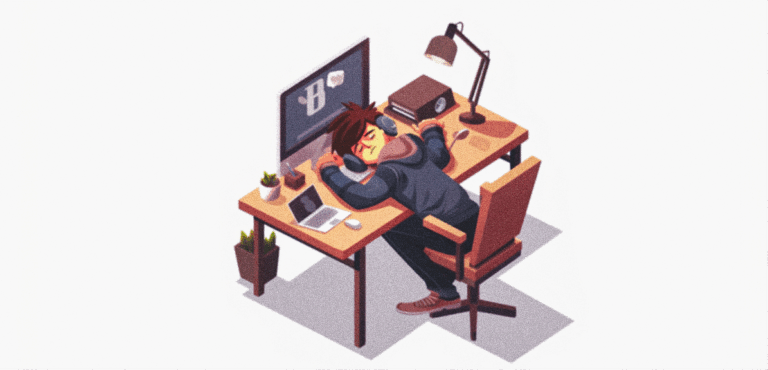
Tool Fatigue is Real: Are Too Many Apps Killing Productivity?
Across workplaces, one of the biggest sources of daily frustration isn’t slow hardware or clunky Wi-Fi; it’s the sheer number of apps people are expected to juggle. A single vendor update or acquisition can break integrations overnight, scattering workflows across multiple platforms and leaving teams scrambling to find documents, sync tasks, or track conversations.
What began as a way to boost efficiency is now creating its own form of friction.
SaaS overload isn’t just about having too many tools. The constant cycle of adoption, optimisation, and disruption has become part of modern work. The question is whether all these tools are making us more productive or quietly draining our focus.
Growth everyone wanted, the mess nobody planned for
When your productivity toolkit becomes the very thing that’s destroying your productivity
The explosion of SaaS solved real problems. Slack reduced email chaos. Cloud project management replaced scattered spreadsheets. Specialised tools made sense; each addressed a workflow challenge better than general-purpose alternatives.
But success created new challenges. Companies that once relied on five core apps now manage dozens, sometimes hundreds. Okta’s Businesses at Work report found that large companies with over 2,000 employees use 211 applications, while smaller firms average around 89. Yet workers typically engage with only a fraction of these, often 15–20 daily, leaving the rest accumulating like digital clutter.
This complexity wasn’t deliberate. Business needs have evolved quickly, and every department has sought tools to optimise its processes. Marketing needed automation, sales wanted CRM, HR required compliance systems, and IT demanded security platforms. Each solved local problems without considering the overall cognitive load on employees.
Vendors fuelled this further. Niche solutions can charge premium prices and face less competition than broader platforms. It’s often more lucrative to build the best invoice management tool than to fold average invoicing into an all-in-one suite.
The employee experience reality
The impact on employees is striking. People often find themselves switching between apps repeatedly, with every transition adding to mental strain. Many workers describe a sense of “productivity anxiety”, a constant worry about missing information across multiple notification streams. For younger employees, especially, this stress has become a daily part of work.
Yet specialised tools aren’t inherently bad. Designers value advanced design platforms even if it means another login. Developers rely on dedicated version-control systems despite integration overhead. The issue isn’t tool variety, it’s how those tools are implemented and managed.
Teams that thrive with multiple platforms share common traits:
- Clear rules about which tool serves which function.
- Investment in training rather than assuming intuitive adoption.
- Regular audits to identify overlap and cut waste.
The rise of “shadow IT,” where employees use unapproved tools, often reflects this frustration. People adopt alternatives when official systems are clunky or limited. Far from being just a compliance issue, it’s often a sign of gaps in tool selection.
The vendor side of the story
From the vendor’s perspective, many challenges are unavoidable. Compliance obligations such as GDPR consume engineering time that might otherwise go toward user-facing features.
Integration is also resource-intensive. Smaller vendors may build excellent core products but struggle to maintain compatibility with hundreds of other platforms.
Acquisitions add disruption. While transitions can be painful, they often provide the resources for better integration and compliance in the long run.
Even frequent updates, frustrating as they are, sometimes reflect genuine security improvements. When new vulnerabilities are discovered, rapid change isn’t optional; it’s essential.
Strategies that actually work
The solution isn’t deleting apps. It’s managing them better.
| Strategy | Why It Works |
| Centralised governance with user input | Balances IT oversight with real workflow needs |
| Integration over elimination | Reduces context-switching without forcing tool replacement |
| Planned redundancy | Provides backup options for critical workflows |
| Training as infrastructure | Builds long-term adaptability and productivity |
| Regular audits | Identifies overlap, cuts waste, and improves ROI |
The economics of efficiency
Licence fees are only part of the equation. Add training time, integration work, security monitoring, and lost productivity, and the true cost of SaaS sprawl becomes clearer. Organisations that calculate the total cost of ownership make smarter choices about consolidation versus specialisation.
But efficiency isn’t always about fewer tools. Forcing entire organisations onto one “all-in-one” platform can damage productivity if it fails to meet diverse team needs. Finance and marketing rarely thrive on the same system. Sometimes multiple specialised tools deliver better outcomes than a single compromise. The most successful companies measure effectiveness by outcomes, not just expenses.
If a tool demonstrably boosts performance, it earns its place, even in a crowded stack.
Building resilience for constant change
The one certainty in SaaS is change. Regulations evolve, security requirements tighten, and business needs shift. Stability is fleeting. The smarter strategy is adaptability.
That means documenting processes beyond individual platforms, training people in workflow principles rather than just interfaces, and keeping records of why particular tools were chosen. When change comes, teams with this foundation adapt quickly and maintain productivity.
Change management should be treated as an ongoing capability, not an occasional crisis. Teams that normalise transitions handle them with less disruption and stress.
Distilled
Tool fatigue isn’t about numbers alone; it’s about management. The solution lies in balancing diversity with discipline: blending governance with user input, prioritising integration, investing in training, and auditing regularly. The goal isn’t fewer tools or perfect simplicity. It’s sustainable productivity in a workplace where constant change is the only constant.